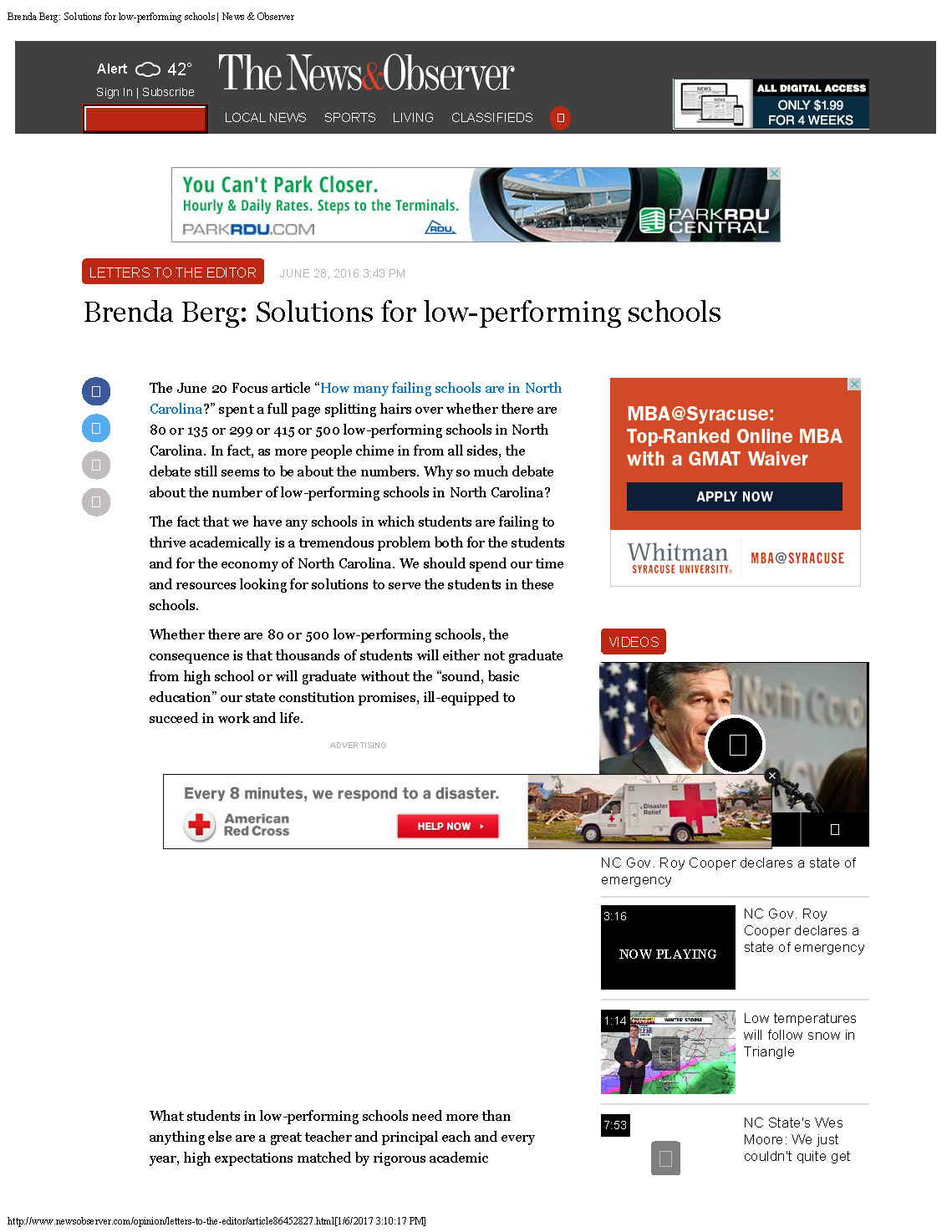The June 20 Focus article “How many failing schools are in NorthCarolina?” spent a full page splitting hairs over whether there are 80 or 135 or 299 or 415 or 500 low-performing schools in North Carolina. In fact, as more people chime in from all sides, the
- debate still seems to be about the numbers. Why so much debate
- about the number of low-performing schools in North Carolina? The fact that we have any schools in which students are failing to
thrive academically is a tremendous problem both for the students and for the economy of North Carolina. We should spend our time and resources looking for solutions to serve the students in these schools.
Whether there are 80 or 500 low-performing schools, the consequence is that thousands of students will either not graduate from high school or will graduate without the “sound, basic education” our state constitution promises, ill-equipped to succeed in work and life.
What students in low-performing schools need more than anything else are a great teacher and principal each and every year, high expectations matched by rigorous academic opportunities and caring adults to help them tackle life’s challenges. Unfortunately, far too many students are missing at least one of these keys to success.
Students in high-poverty schools are nearly half as likely as their more affluent peers to have access to teachers who are National Board Certified or rated as “highly effective.” Instead, they are nearly twice as likely to have a first-year teacher or a teacher who “needs improvement.”
With every educator paid the same, regardless of where they teach or the challenges they help their students overcome, it is no wonder that our highly effective teachers and principals get “promoted out” of low-performing schools and into more affluent schools.
Students in low-performing schools also have less access to challenging courses that will inspire them and set a positive course for their future. And all too often, students in low-performing schools lack a parent, coach or mentor who can help navigate their academic and personal challenges.
These obstacles may seem insurmountable, but there are schools and programs that provide struggling students with a more equal opportunity to learn through high expectations, wrap-around services and strategic staffing.
School systems like Charlotte-Mecklenburg and Winston-Salem Forsyth have found ways to attract some of their best teachers to teach in the schools where they are needed most.
Programs such as Communities in Schools, Citizen Schools, Big Brothers/Big Sisters and the YMCA provide students with caring coaches or mentors to help them thrive in and out of the classroom.
Rather than debating the numbers, we should focus on finding ways to scale successful initiatives into every low-performing school in the state. So, the question isn’t how many low- performing schools are there in North Carolina? The question is: What are we going to do about it?
BRENDA BERG
PRESIDENT, CEO BEST NC (BUSINESS FOR EDUCATION SUCCESS AND TRANSFORMATION IN NORTH CAROLINA)
Click here to view Solutions for low-performing schools PDF
[/vc_hidrop]



